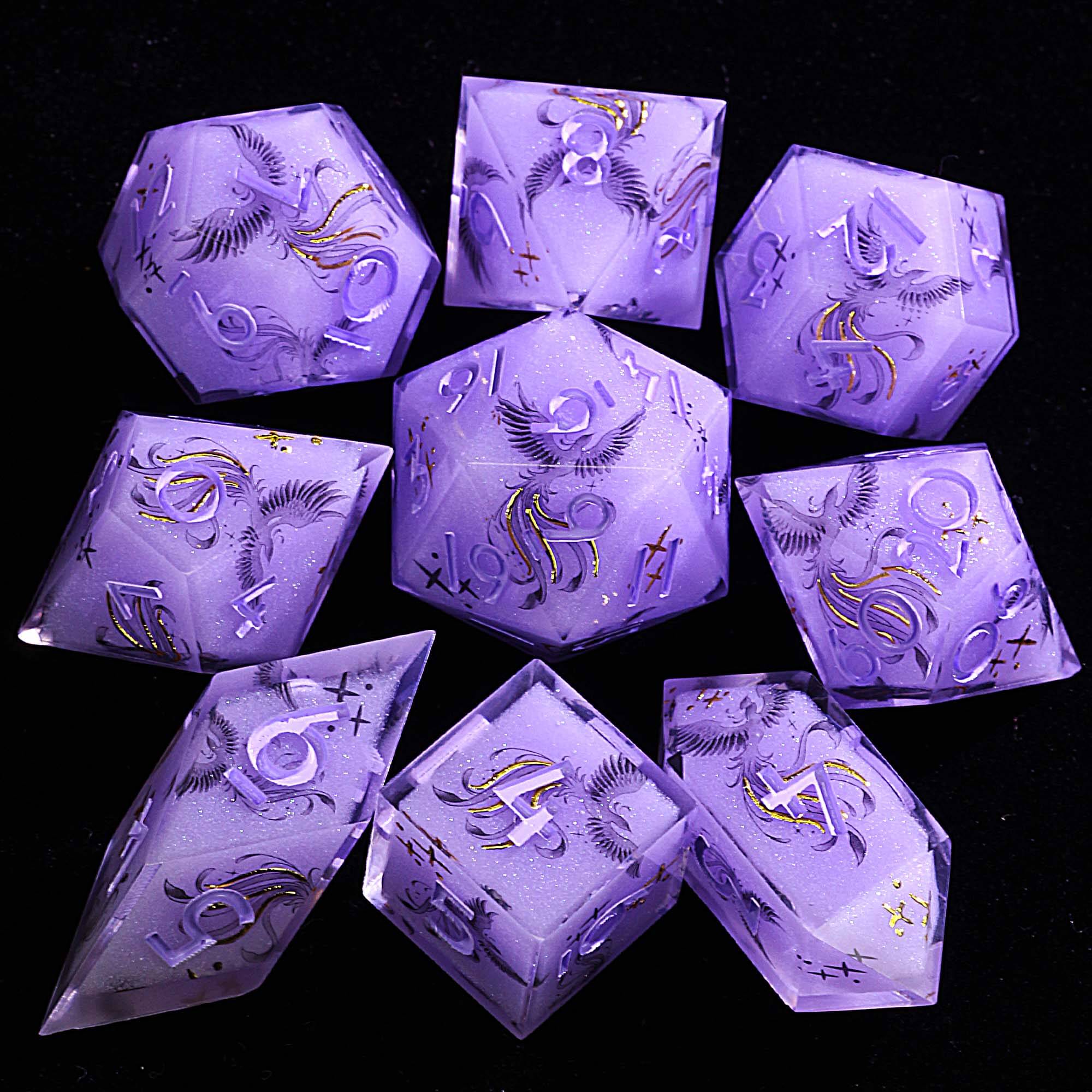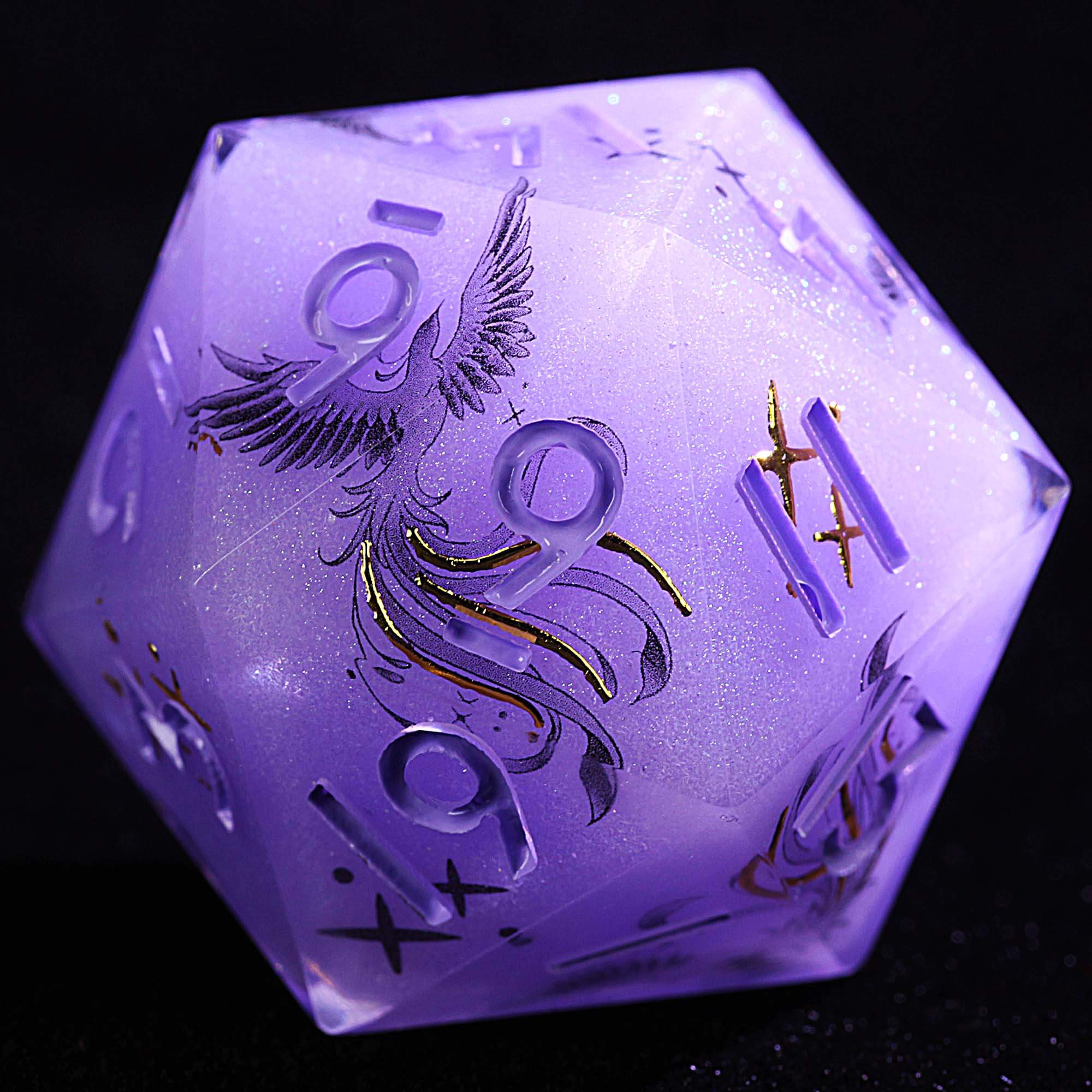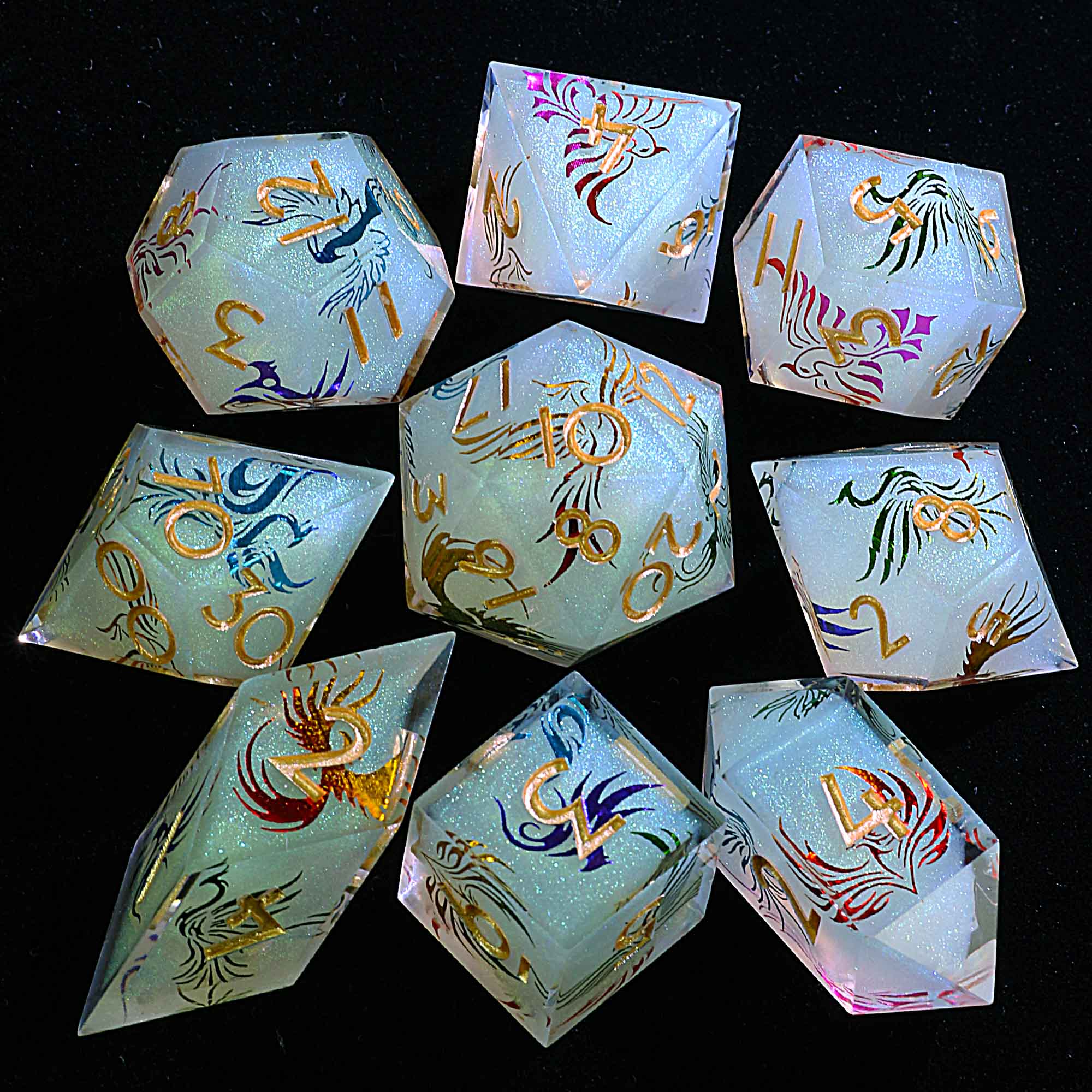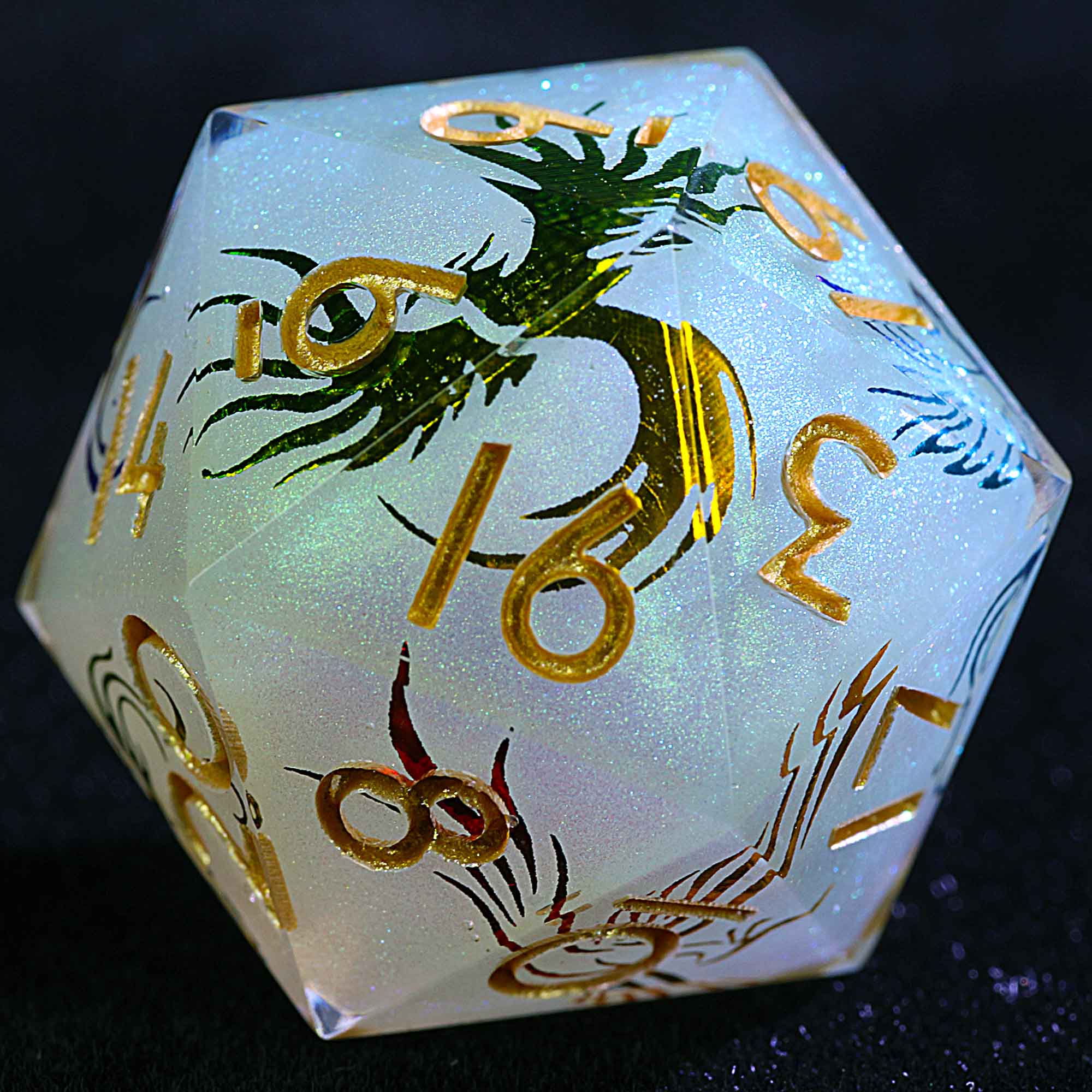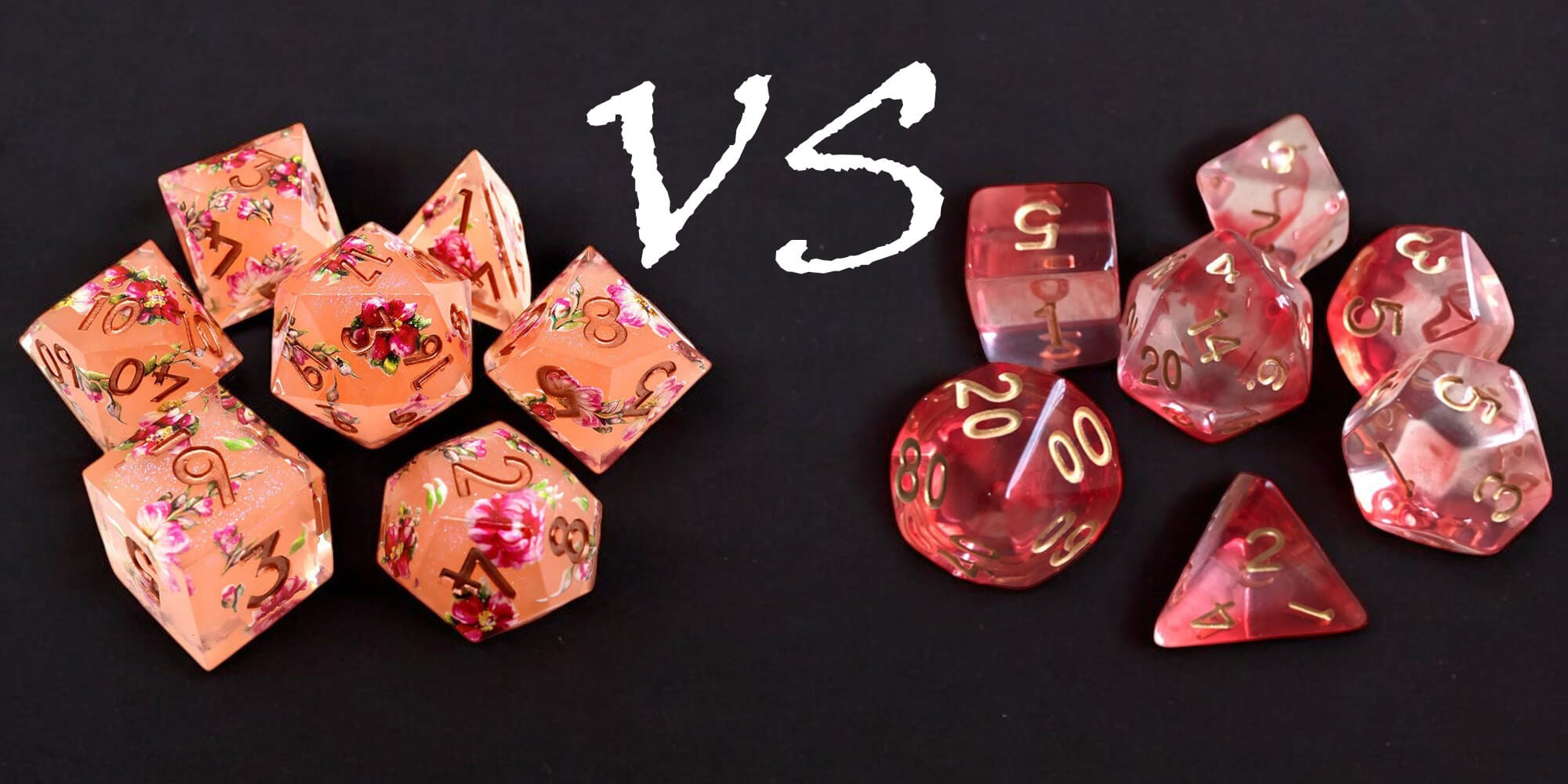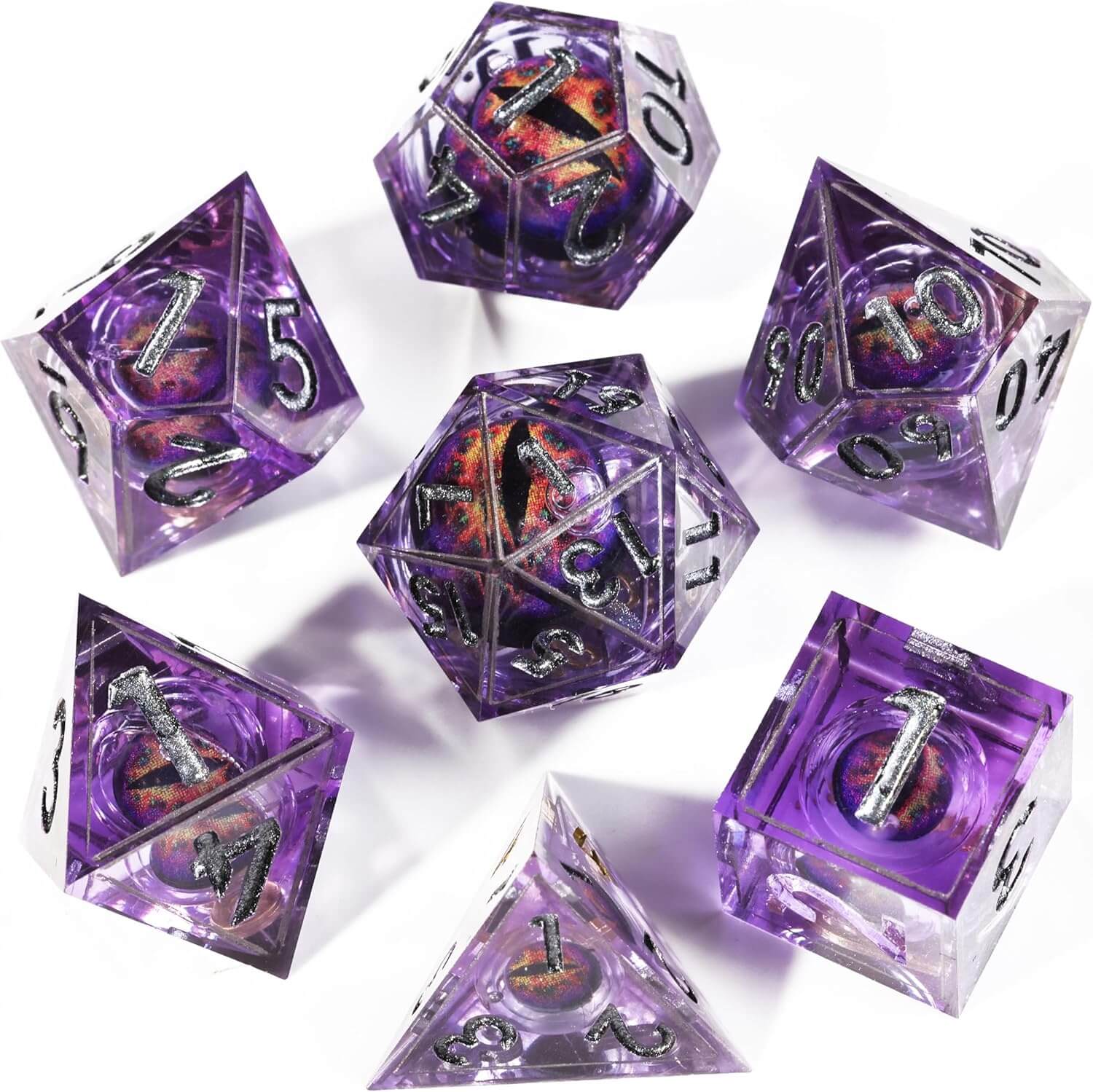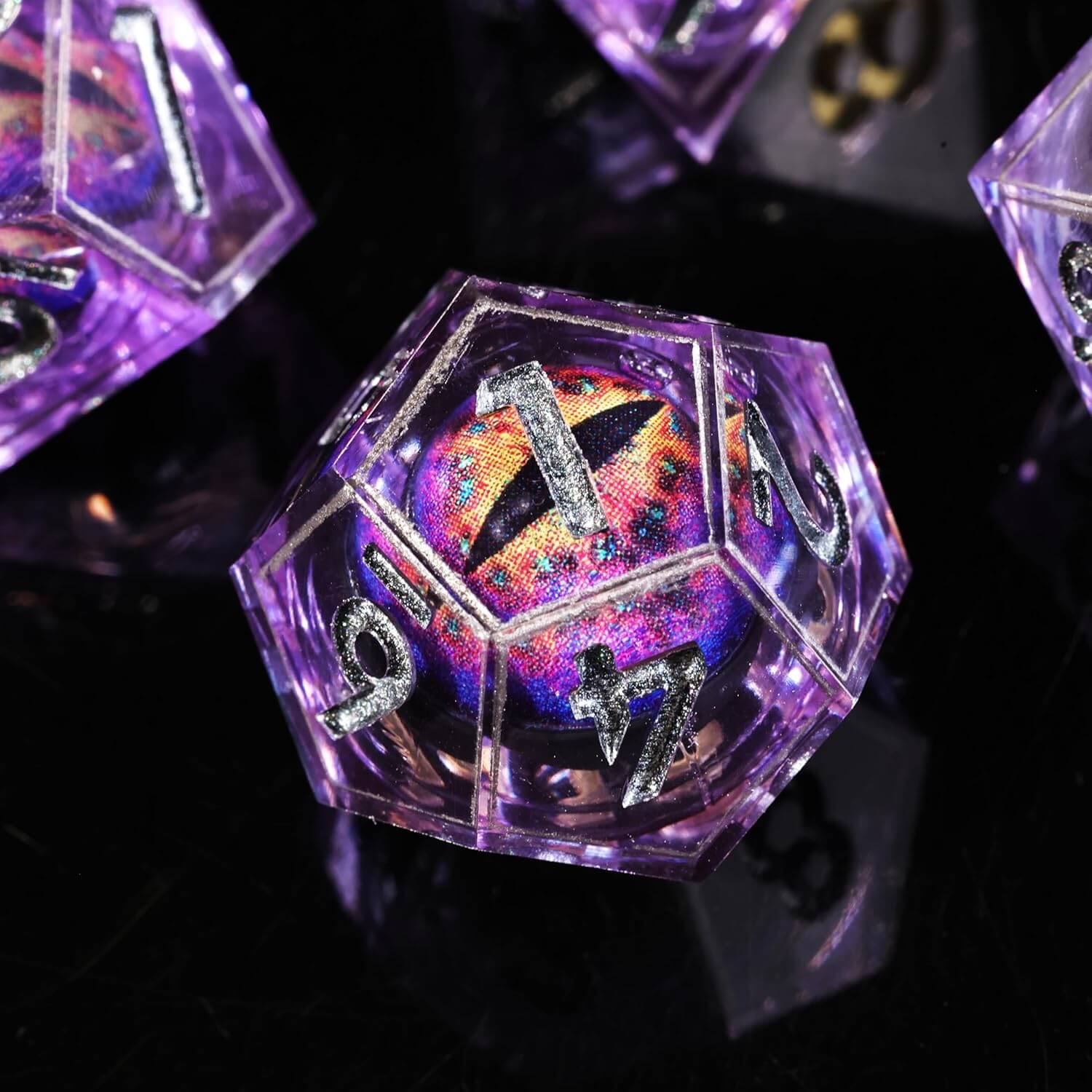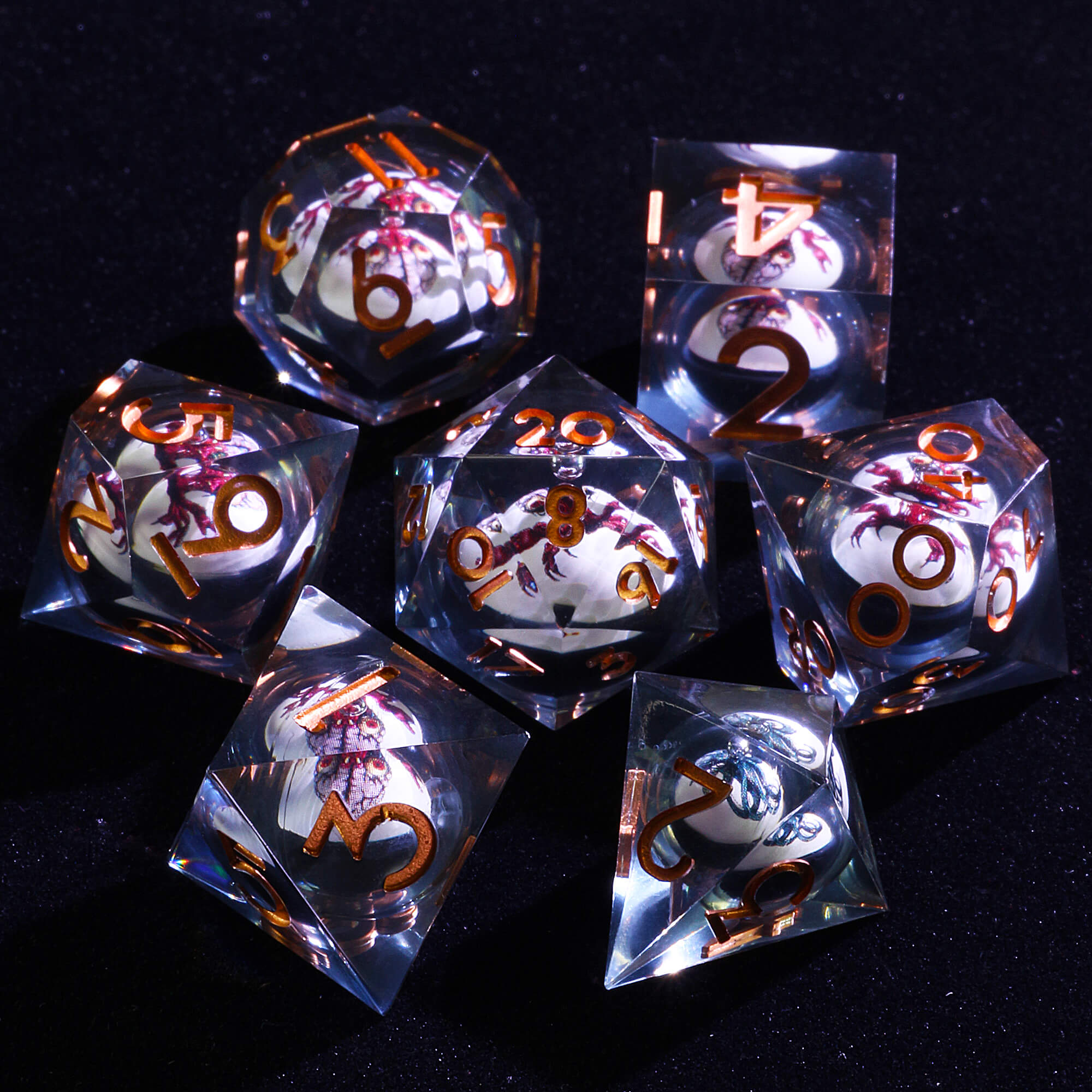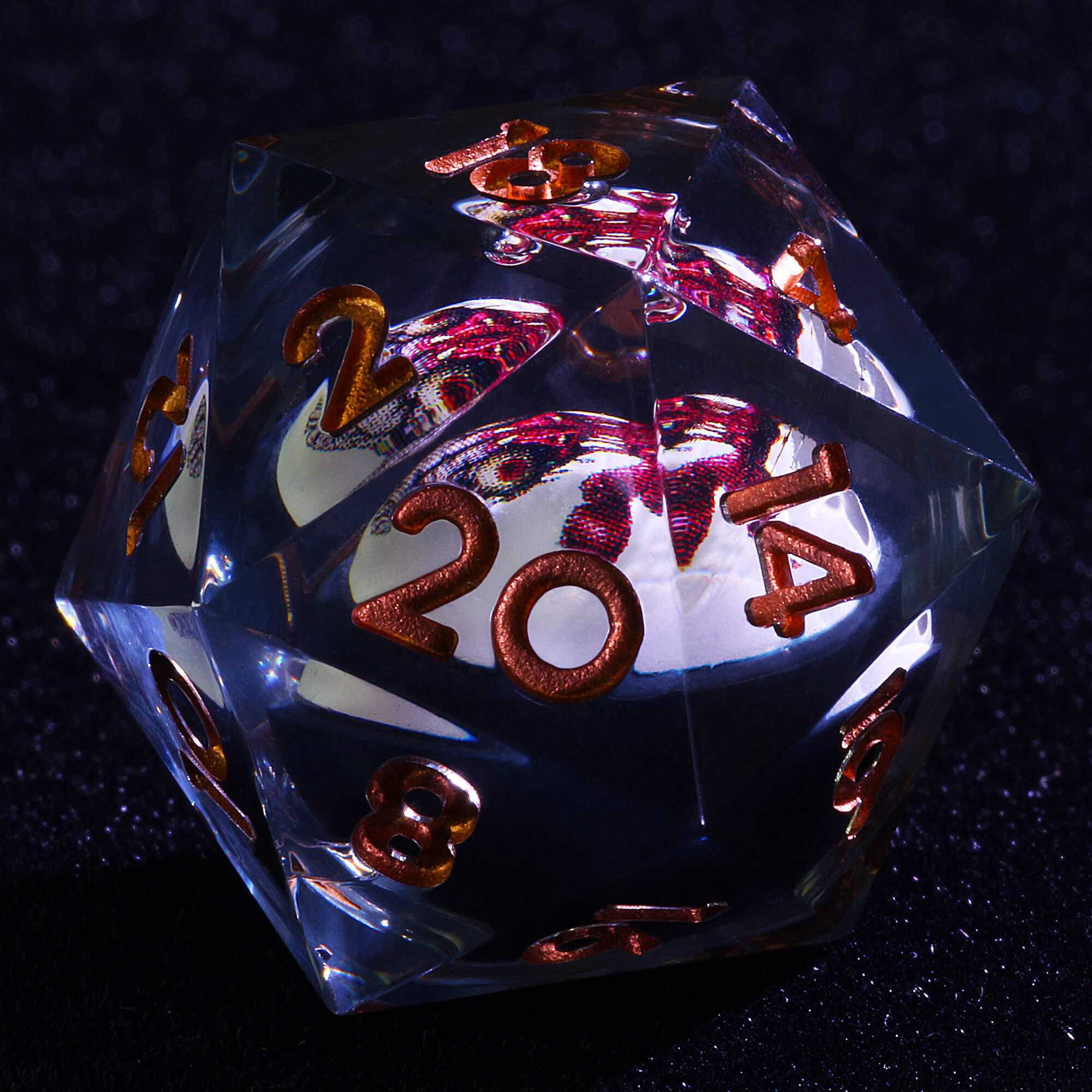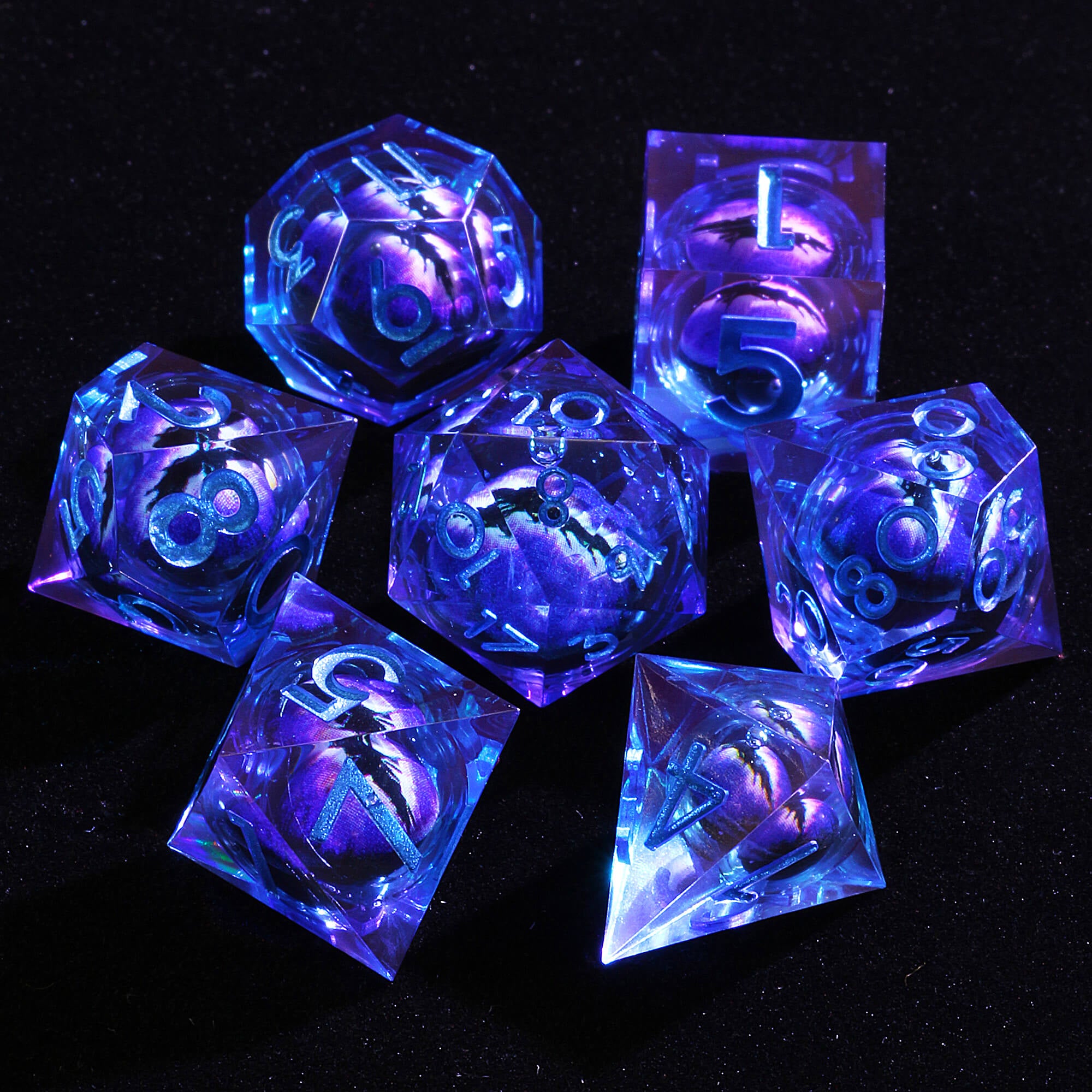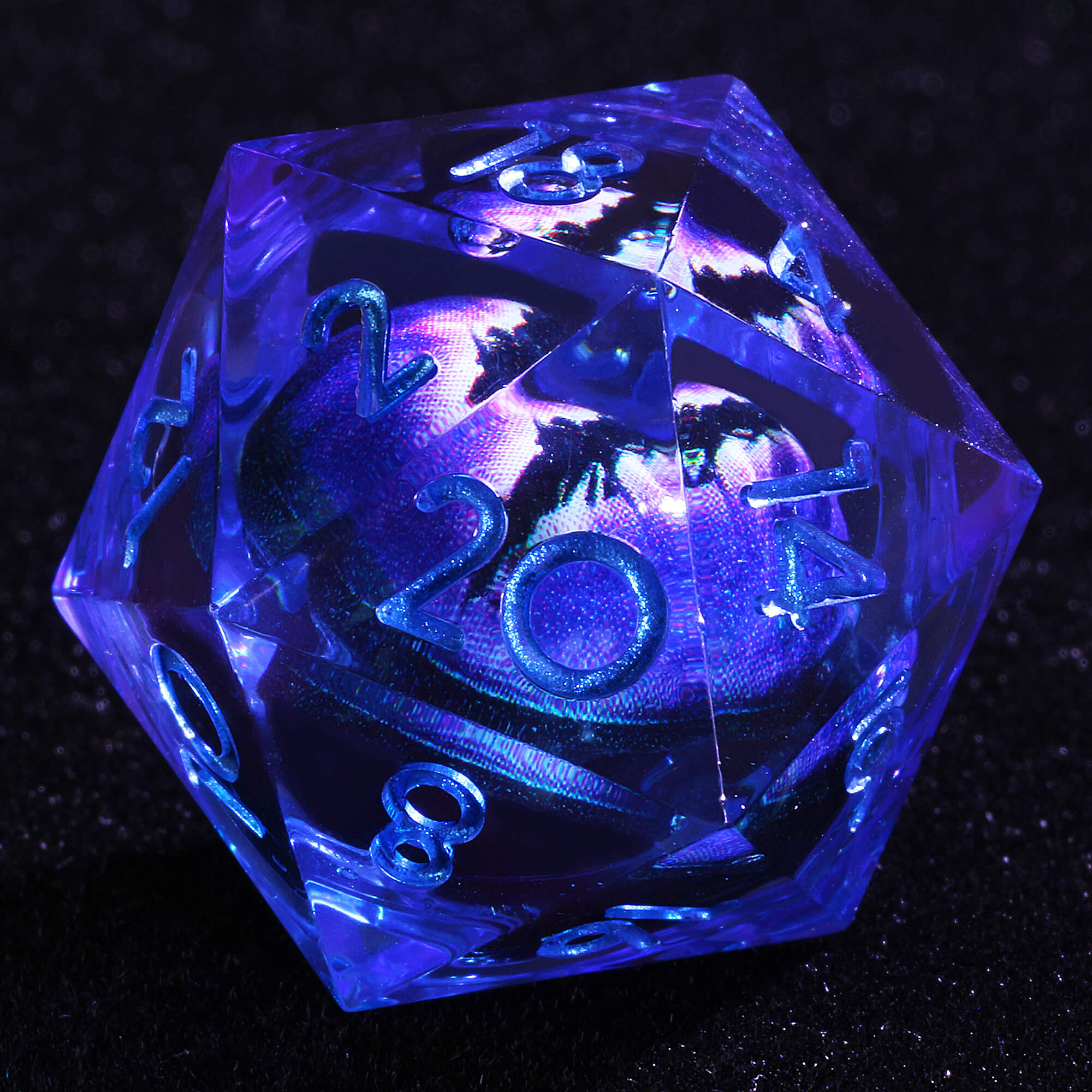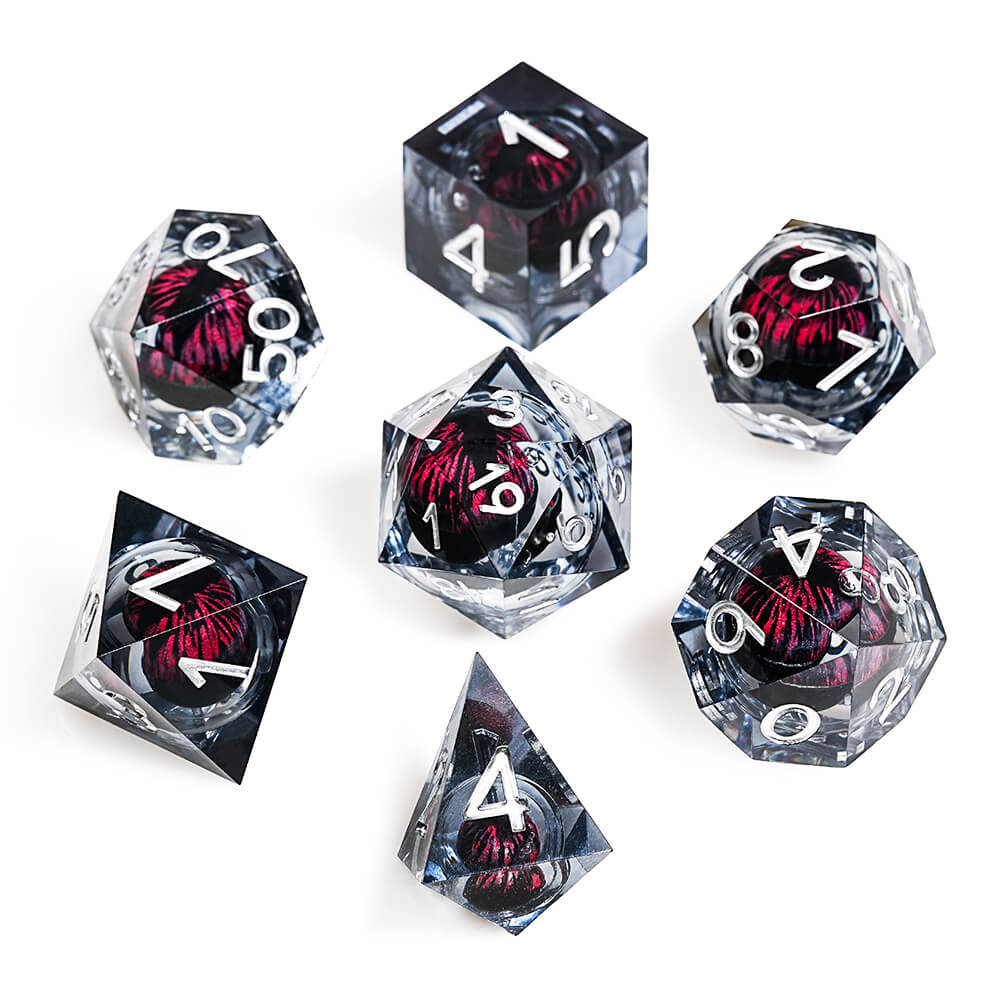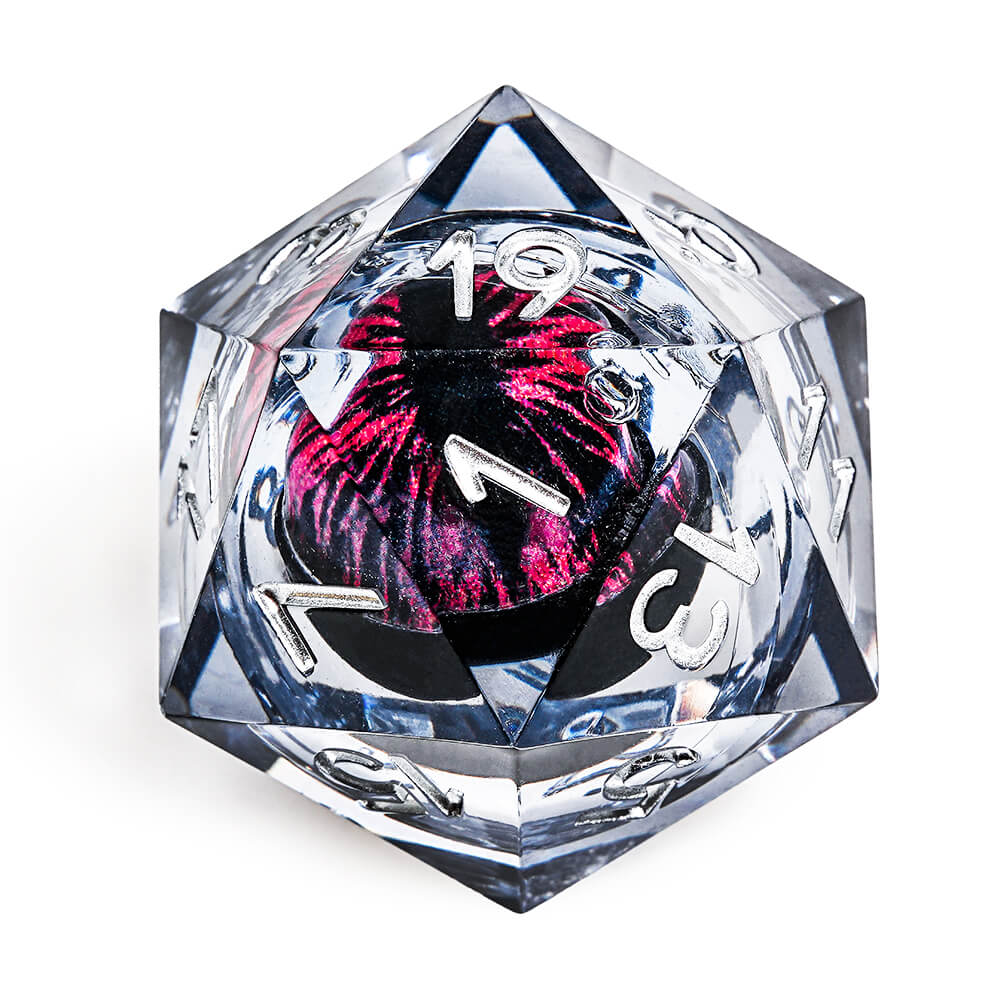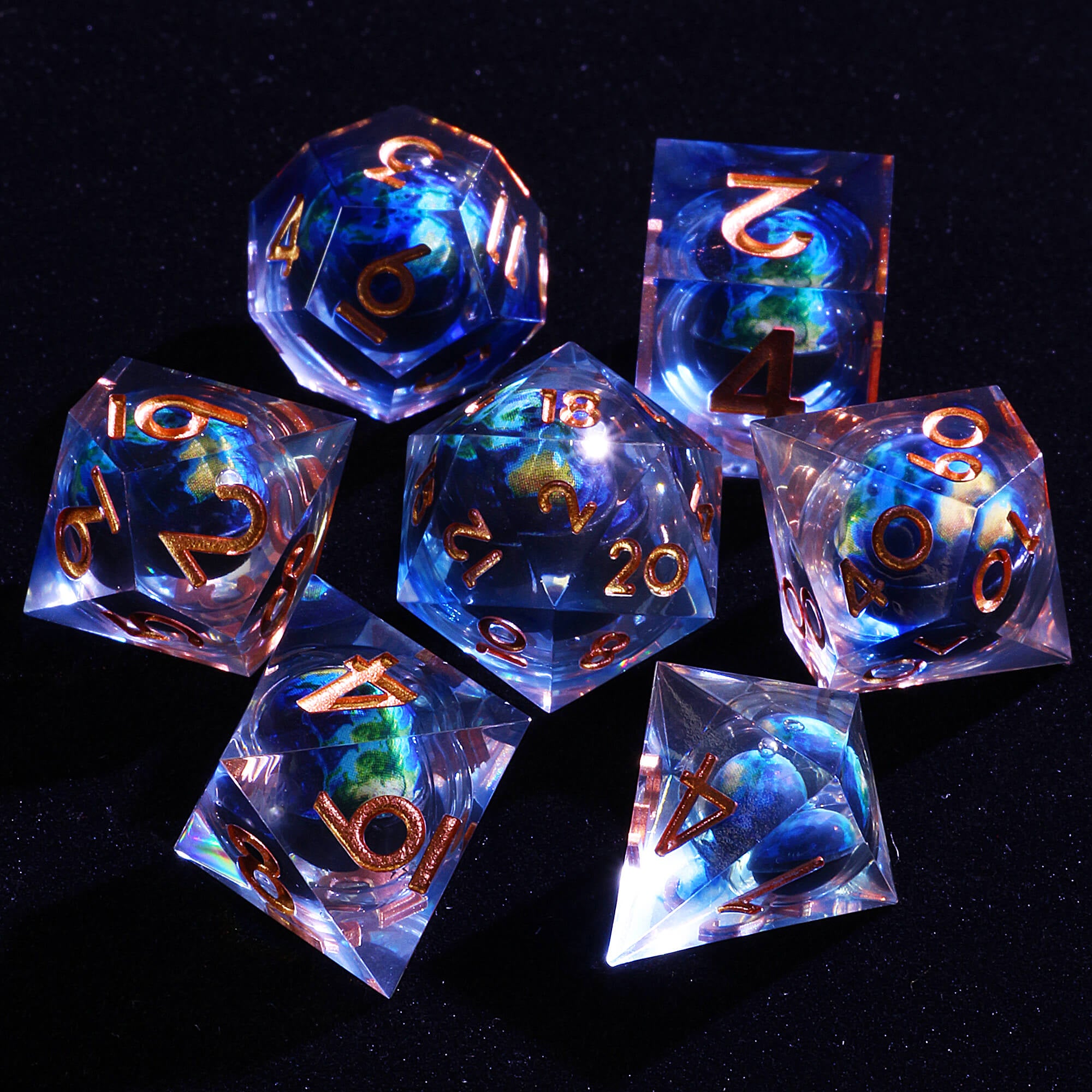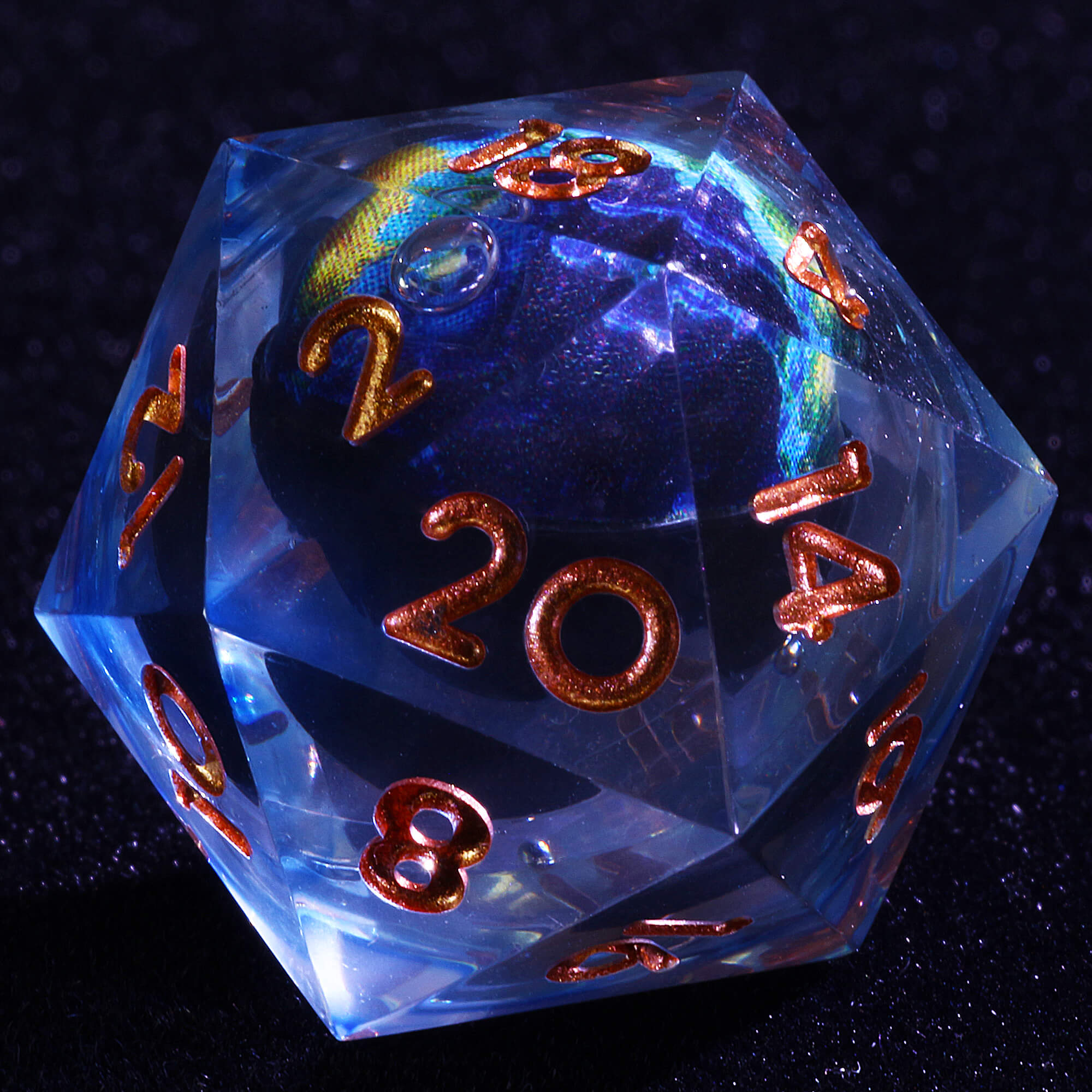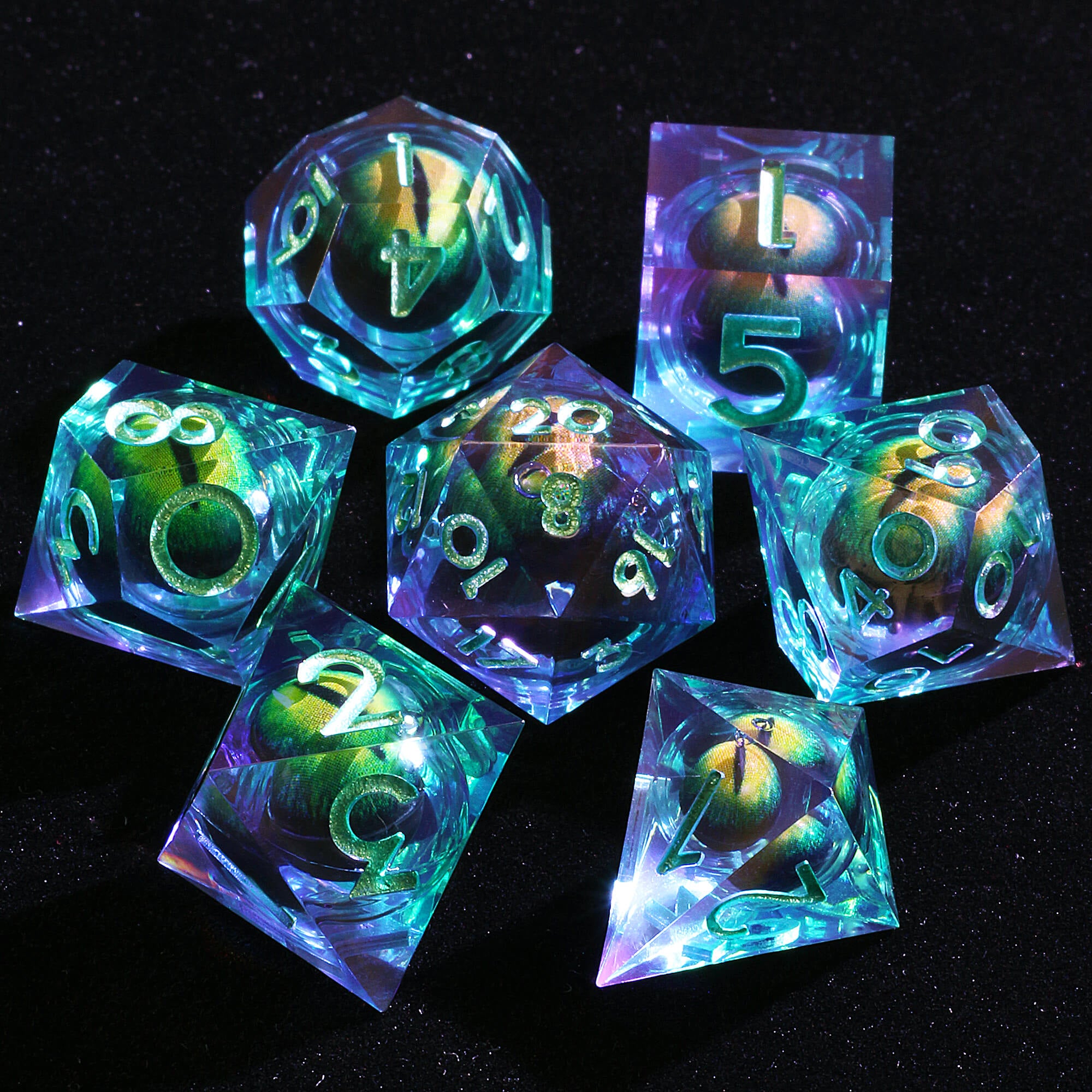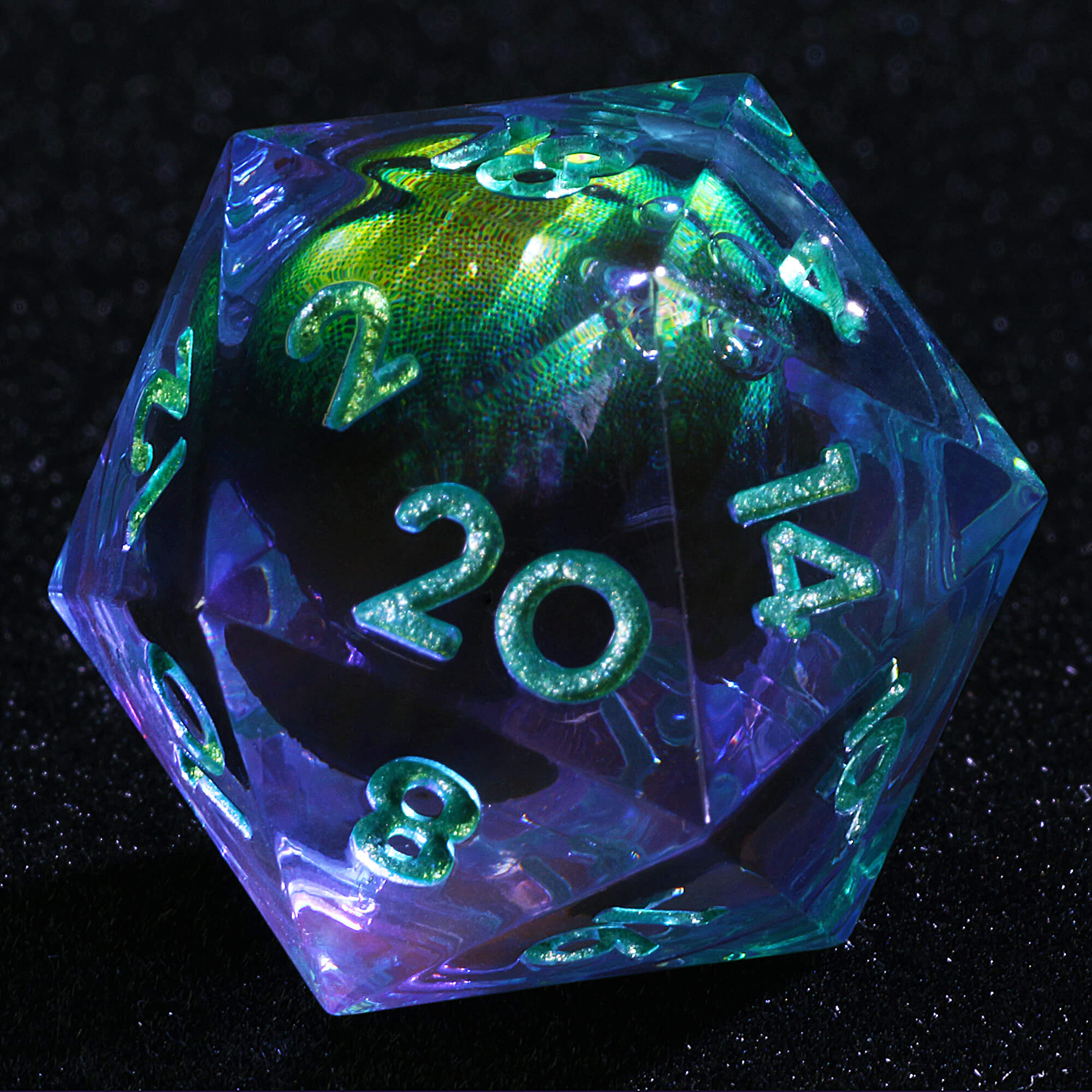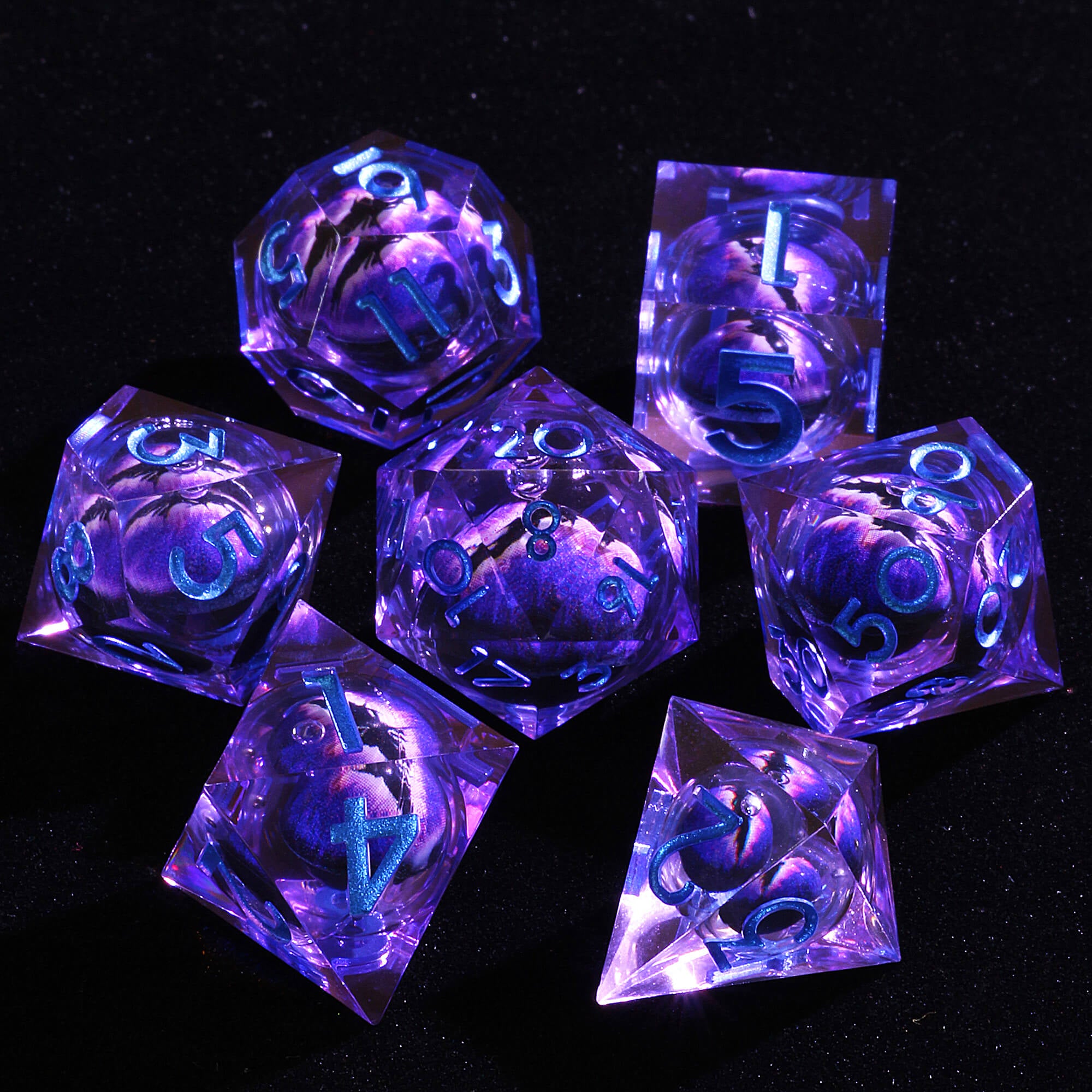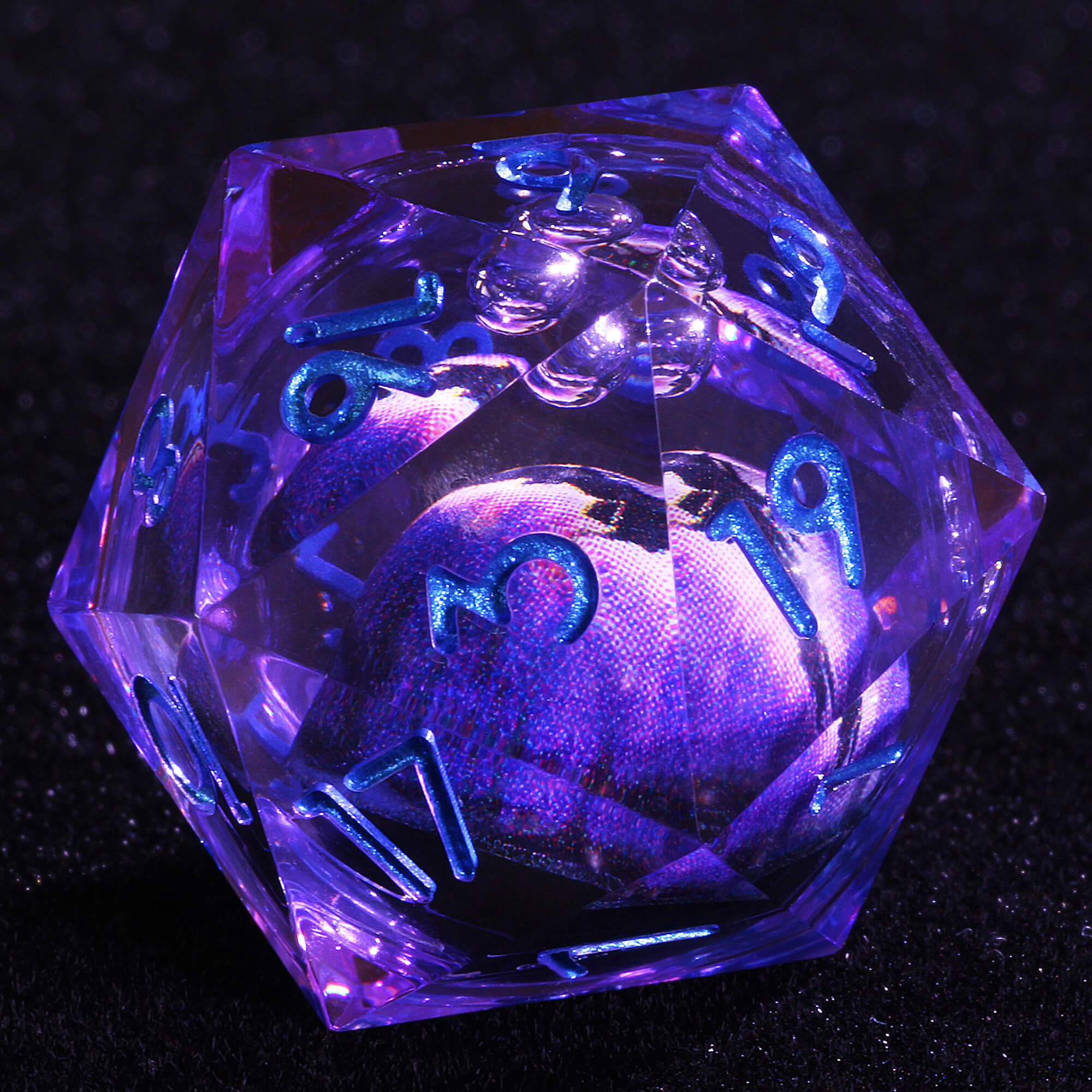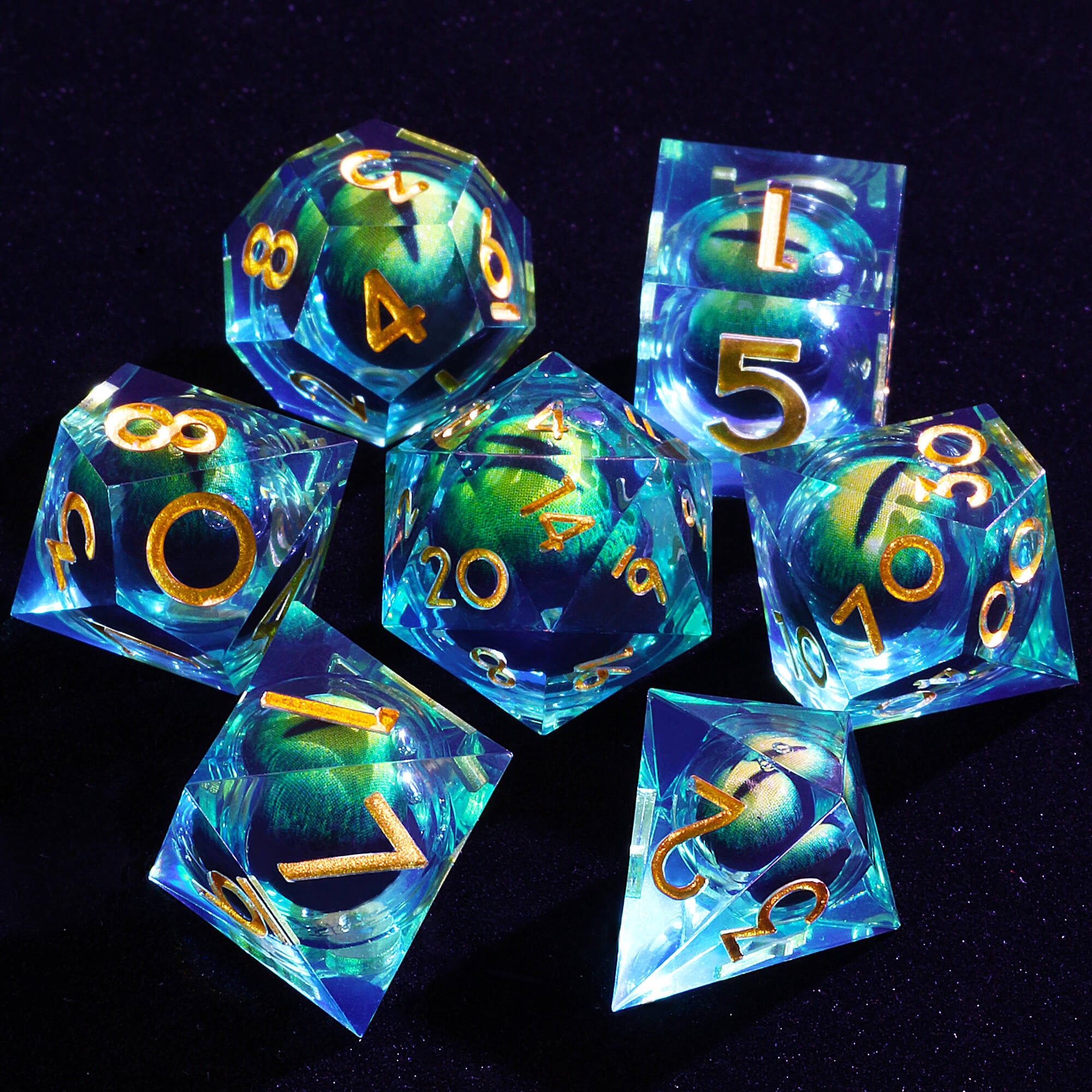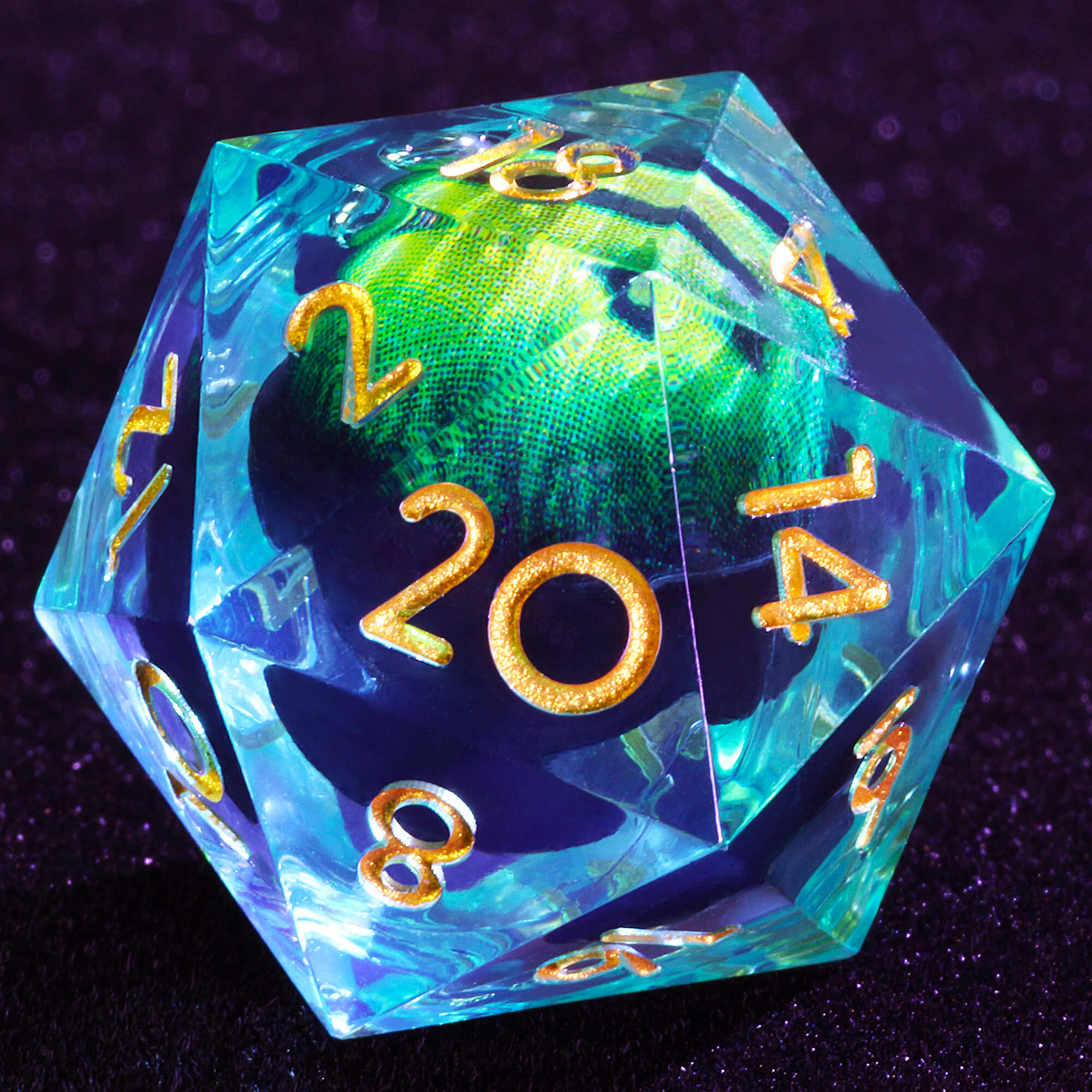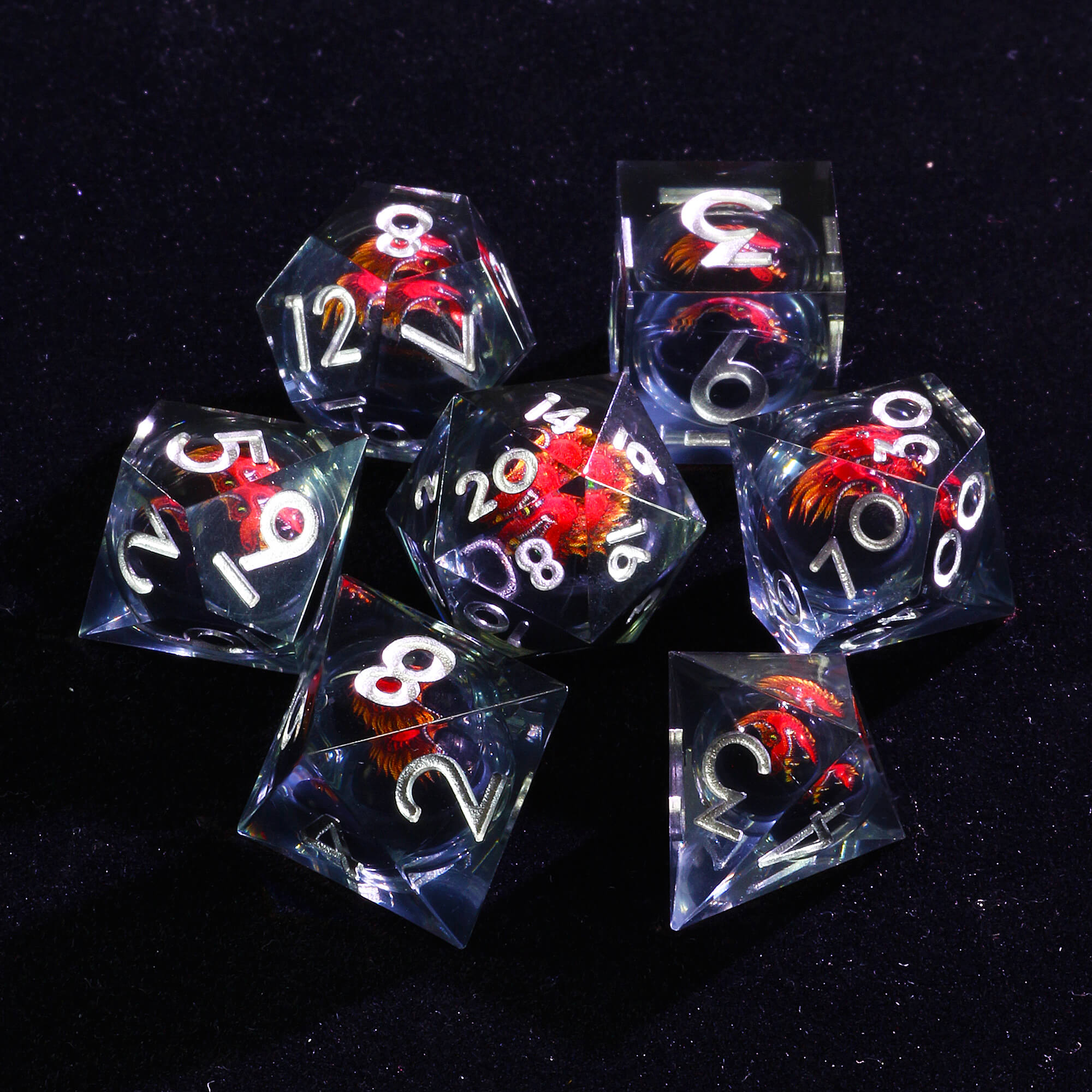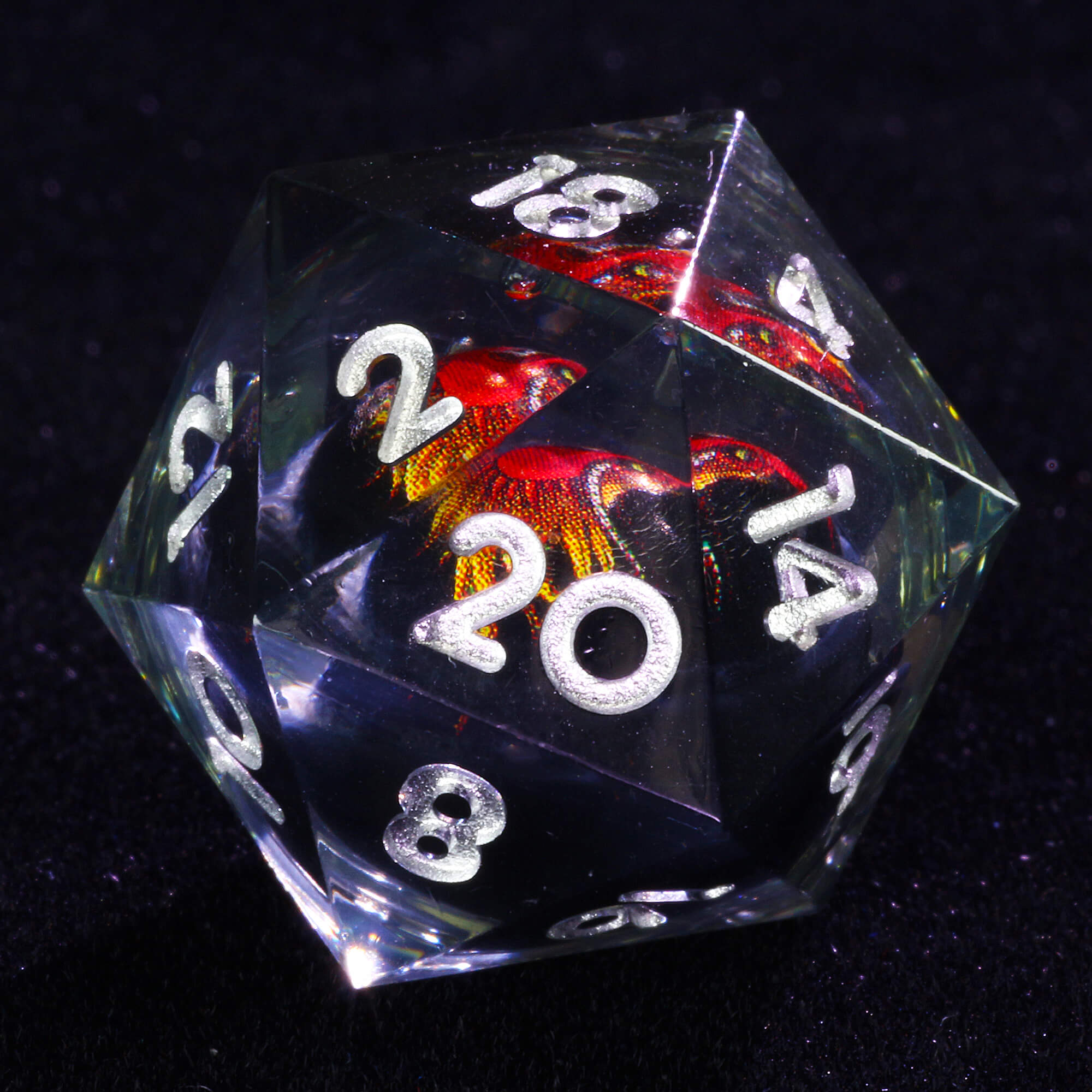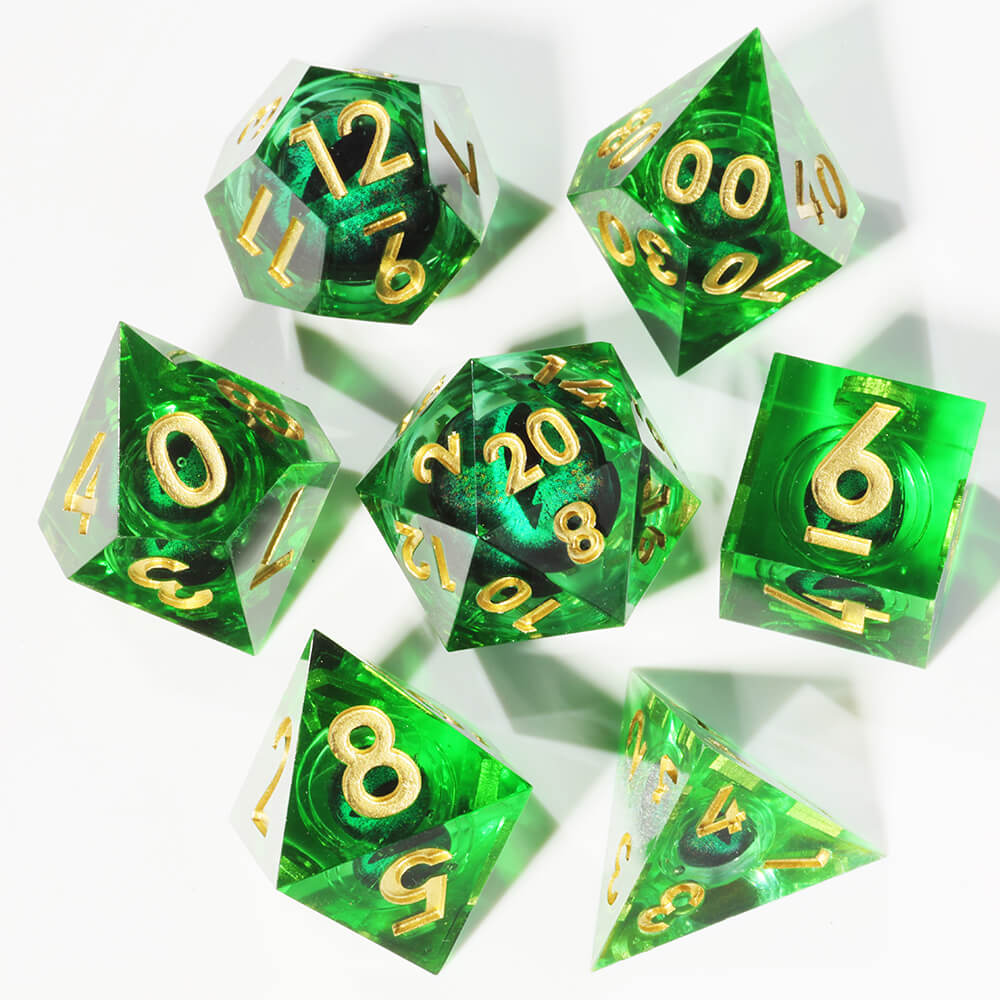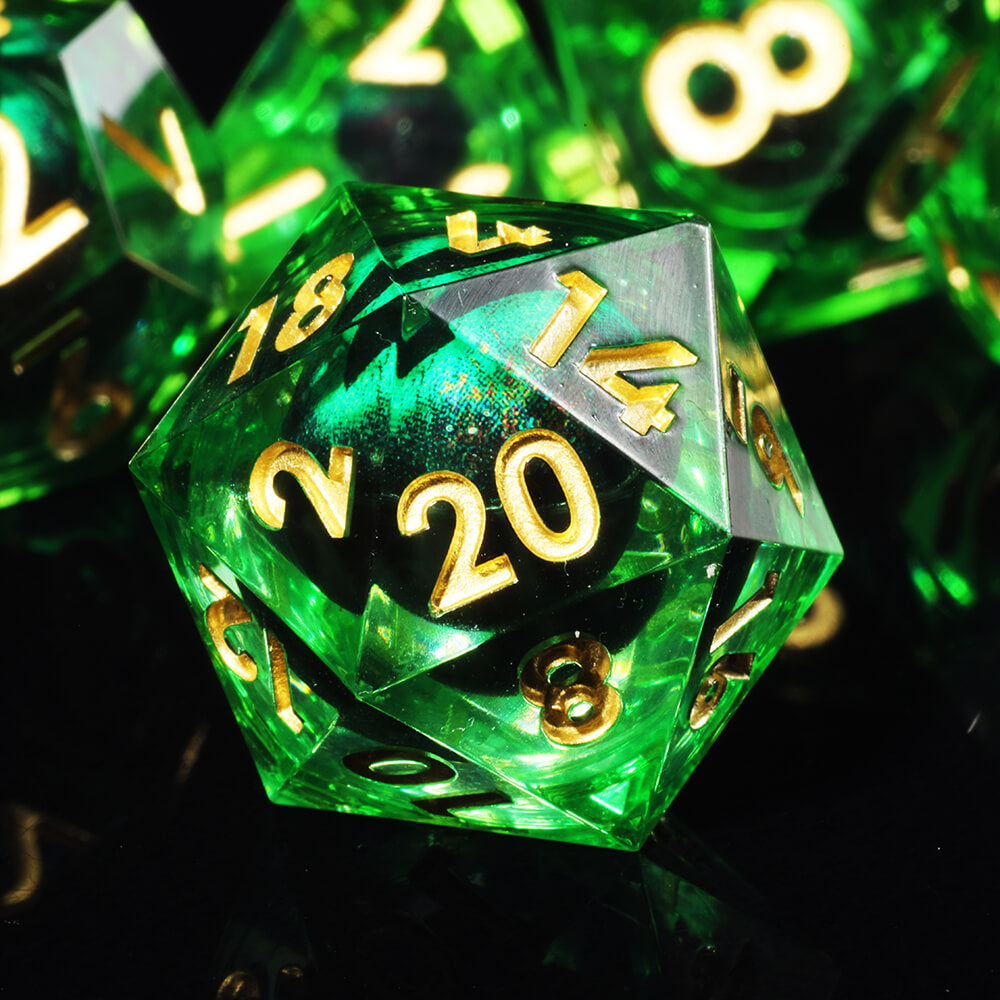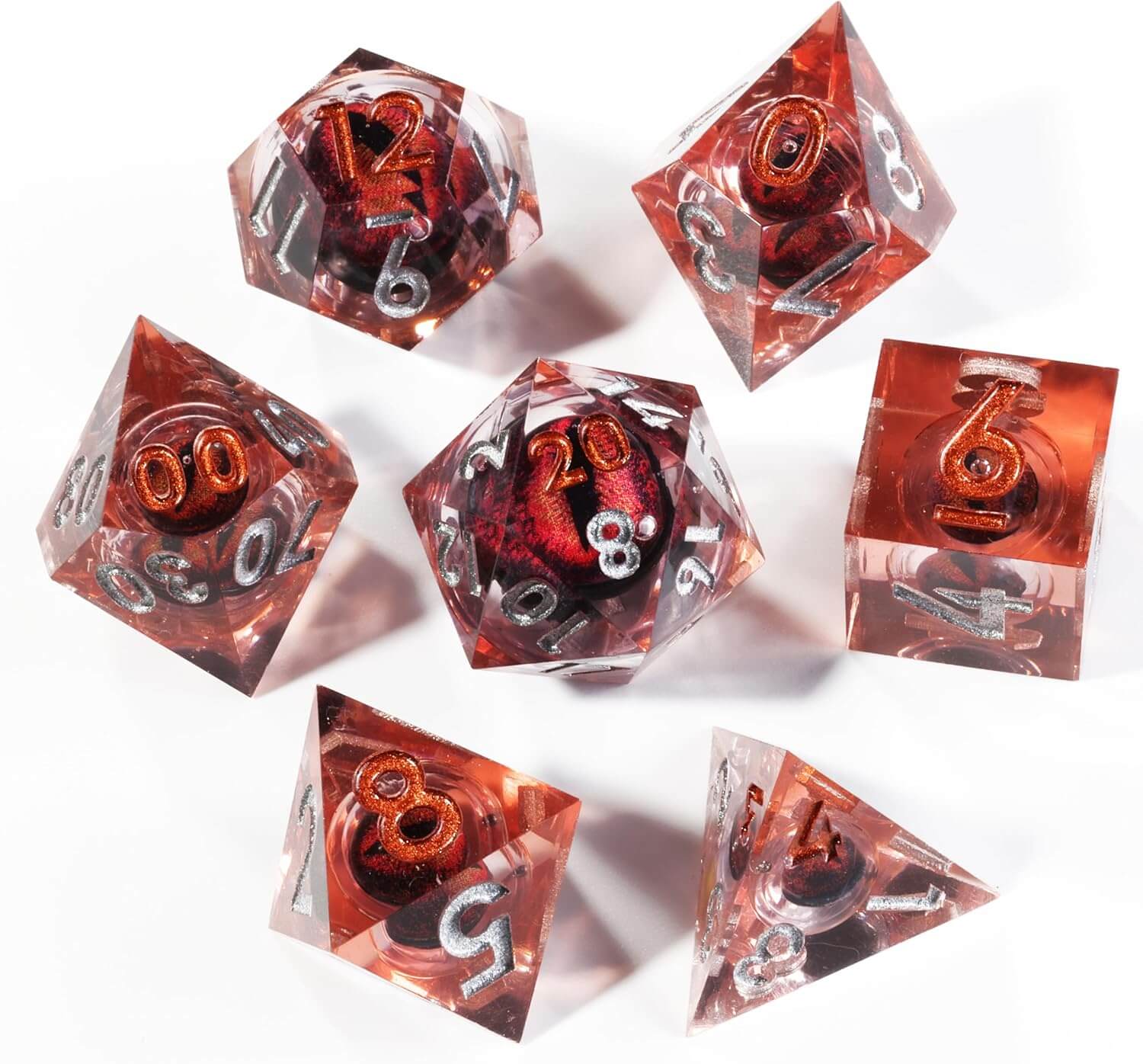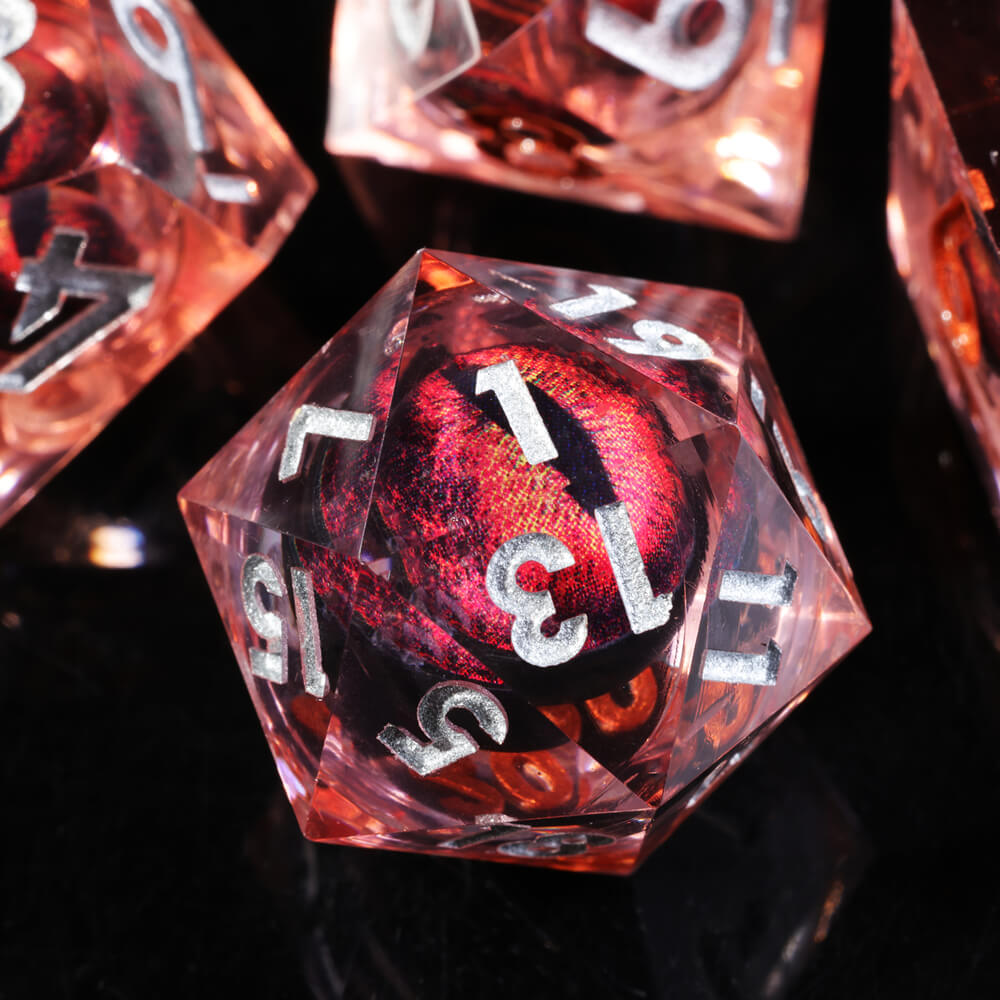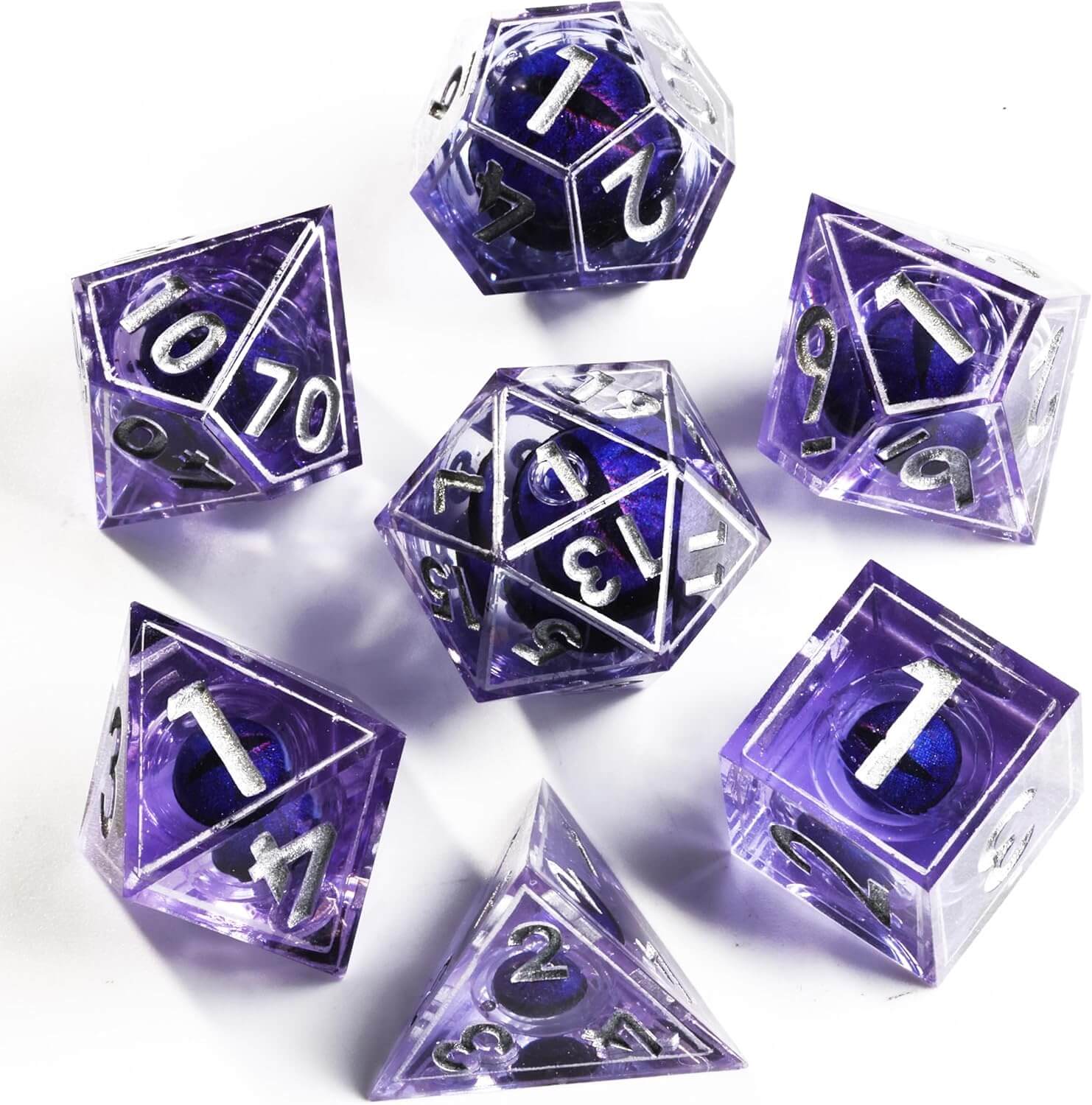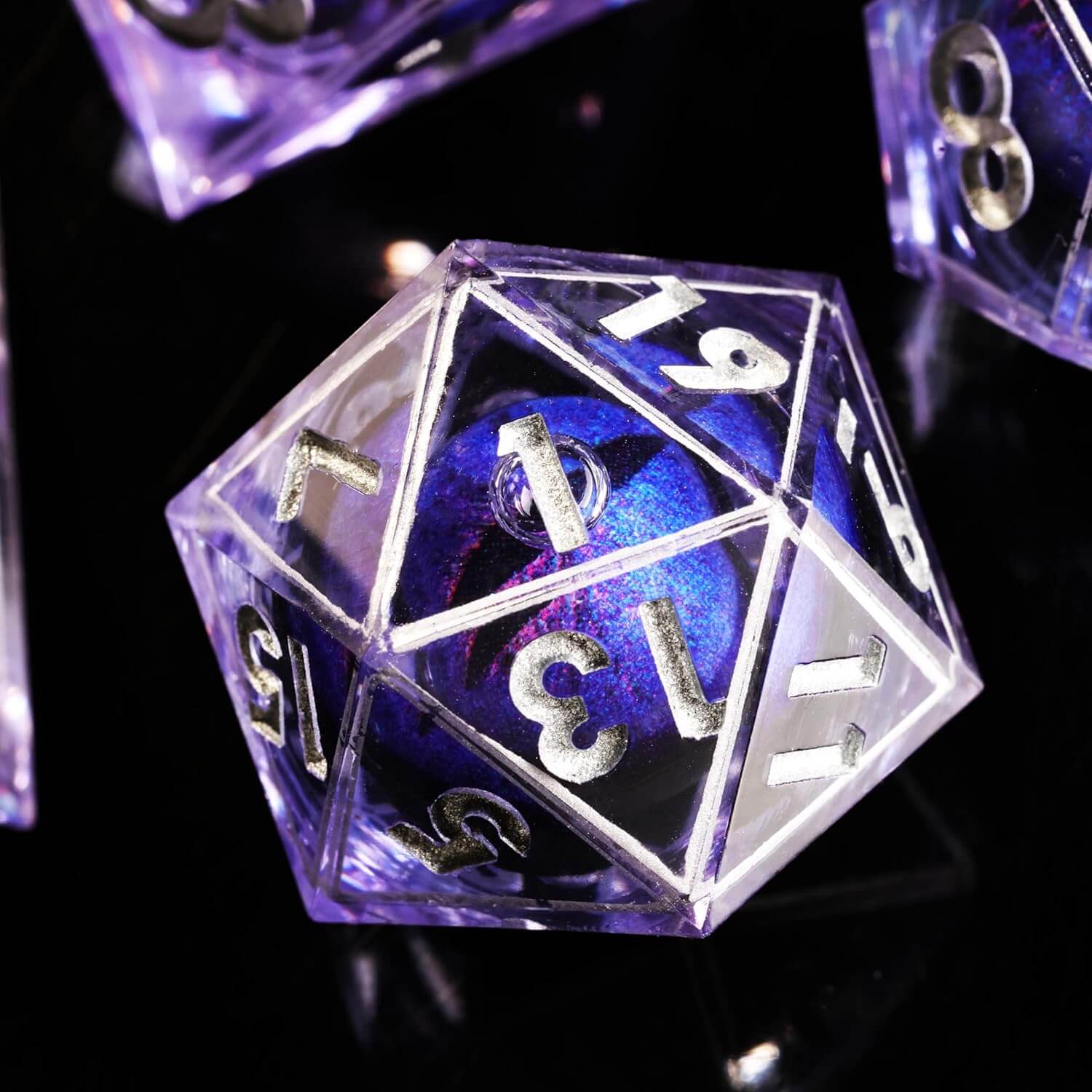When playing a tabletop RPG like Dungeons & Dragons, your dice do more than add up numbers—they reflect your style and preferences. But when choosing between sharp edge dice and round edge dice, how do these subtle design differences impact your game? In this post, we’ll break down the pros and cons of each type to help you make an informed decision.
Sharp Edge Dice: Precision and Visual Impact
Sharp edge dice, as the name suggests, feature crisp, well-defined corners. This design gives the dice a clean, geometric look, making them visually striking. But beyond appearance, these edges offer some key functional benefits.
Precision and Fairness
Sharp edge dice are often called "precision dice" because of their accuracy. The same design is used in casino dice, which require high randomness standards. The sharp, 90-degree edges of precision dice help them settle more quickly, resulting in fewer unpredictable rolls. This ensures a more even distribution of outcomes, which is crucial for maintaining fairness in games that rely on randomness.

Why Does This Matter?
Round edge dice can wear down over time, and this gradual rounding can introduce biases in your rolls. In contrast, the sharp edges in precision dice maintain a consistent roll over the long term, ensuring that the results aren't skewed by subtle weight or balance shifts.
Durability and Long-Term Accuracy
Sharp edge dice are generally more resistant to wear and tear. Although the sharp corners appear delicate, they can maintain their shape over time, making them more reliable for long-term play. This durability also means they'll remain "fair" for longer than round dice, which may wear down unevenly and affect roll results.
The Showcase Factor
One of the most significant aesthetic draws of sharp edge dice is how they showcase their intricate designs. For resin dice enthusiasts, sharp edges highlight the beauty of internal inclusions like glitter, miniature objects, or layered designs. If you're into dual-layer dice—where the inner layer contains stickers or intricate patterns—sharp edge dice function like a tiny display case, letting you see every detail from multiple angles.
Craftsmanship and Cost
Sharp edge dice are often handcrafted, which adds to their cost and uniqueness. The precision required to create crisp edges and maintain balanced layers—especially for dual-layer dice with intricate designs—demands more time and skill. Artisans must carefully position internal objects, usually in the center, to maintain aesthetic harmony. The production process of layered design dice involves creating a smaller die, applying tiny stickers or decorations, and then pouring a second layer of resin. Ensuring uniformity in thickness across each face requires precision, adding to the complexity and cost of these dice.
(Bonus Tip: The layered dice set in our store are carefully made and are the featured products of our store.)
Round Edge Dice: The Standard Choice

Round edge dice (beveled edge dice) are typically more common, especially in mass-produced dice sets. These dice have softer corners and are often considered easier to roll.
Rolling Behavior
The smoother, rounded edges allow these dice to roll longer and more freely than sharp edge dice. This can be a good or bad thing, depending on what you're looking for. Longer rolls give the dice more time to settle on their lowest center of gravity, which could technically introduce bias over time. However, for casual gaming, the effect is negligible.
Ease of Use
Round edge dice might feel more "fun" or tactile because they roll more freely. They're also less likely to get stuck or jam in a dice tray. The softer edges can feel more comfortable to handle, especially during extended game sessions.
Durability and Wear
One downside to round edge dice is that the edges can wear down faster than their sharp-edged counterparts. Over time, this can subtly affect how they roll and even lead to slightly uneven face sizes, which could introduce bias in the results.
Cost and Variety
Round edge dice are often mass-produced and are more budget-friendly. They come in many designs, colors, and themes, making them ideal for players who want variety without breaking the bank. While they may not offer the precise craftsmanship of sharp edge dice, they are a solid choice for most casual players.
Sharp Edge Dice vs. Round Edge Dice: The Final Roll
So, which dice should you choose? It all depends on what you're looking for in your gaming experience.
For Precision and Fairness
If you're after dice that deliver accurate, unbiased rolls, sharp edge dice are your best bet. They wear down slower and are designed to be fair, making them the go-to choice for more serious or competitive players.
For Aesthetics and Craftsmanship
If you appreciate the craftsmanship and want dice that double as mini art pieces, sharp edge dice will deliver that "wow" factor. They show off internal designs beautifully and feel like a premium addition to your collection.
For Casual, Long Rolling Fun
If you prefer dice that roll freely and don't want to spend a fortune, round edge dice are perfect for casual gaming. They might not offer the same precision as sharp edge dice, but they do the job for most players.
Conclusion
Ultimately, the choice between sharp edge and round edge dice comes down to personal preference. Both styles have their merits, and both can enhance your D&D experience.
Whichever dice you choose, may your rolls be ever in your favor!
Whether you're after precision or aesthetics, choosing the right dice can make your game even more enjoyable. Explore our collection at Dice of Dragons and find the perfect dice set for your next adventure!

